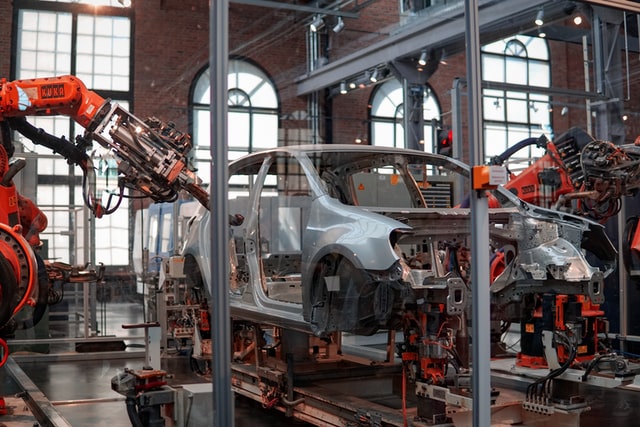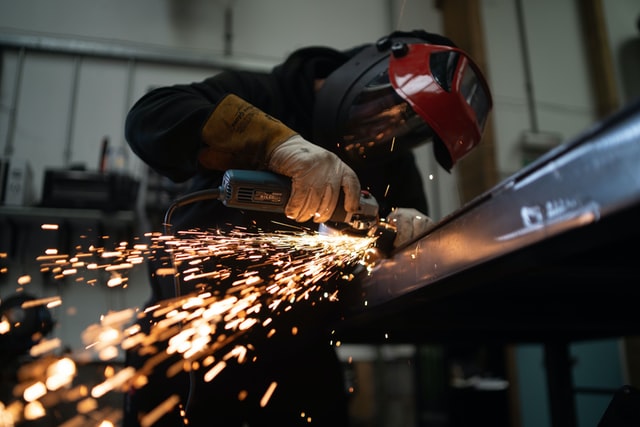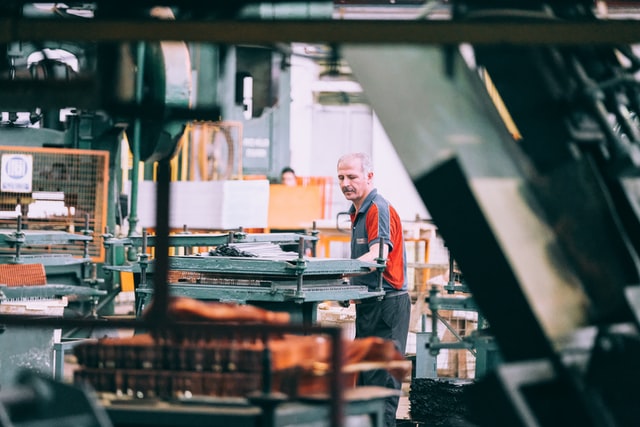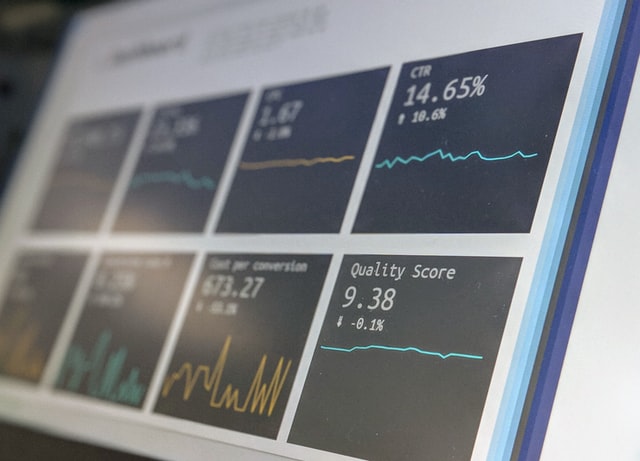
by Garrett Slate | Mar 2, 2022
As M&A in manufacturing heats up, rising interest rates and inflation serve to reduce the potential value of these mergers, especially without good planning. A thoughtful strategy can help generate value via M&A. Here are some critical tips to keep in mind.
Start Early and Plan Ahead
A merger demands time and expertise, and the more of both you have, the better positioned you will be to manage problems as they arise. Bring in the right teams early to prepare for the sale as well as the post-sale integration. Intelligent dealmakers are constantly re-evaluating ways to fast-track the realization of the promised deal synergies.
Optimize Digital Opportunities
Keep an eye on potential automation and digital opportunities that could boost transaction efficiency. One recent McKinsey report suggests that reducing the costs of traditional legacy systems may offer about a 2% boos tin value. Adding additional digital and analytics technologies to boost efficiency may generate savings as high as 4-5%.
Identify and Address Staffing Implications Early
Workforce implications to a deal should not be an afterthought. You must focus on strategies for retaining talent, even when doing so increases costs. Contract talent increases integration risks. It’s better to spend a little more upfront on retaining key talent. Consider it an investment in the future of the new entity.
Adapt to the Needs of the Business
Too often, dealmakers attempt to adapt the business to the needs of the deal rather than the other way around. Your targets should be tailored to the needs of the business. Develop specific benchmarks for measuring success, and continue to adapt these benchmarks based on real-world data.
Simplify Technological Complexities
Manufacturing mergers often trigger significant and complex technological challenges. These strategies can help simplify:
- Nurture a flexible data and transaction architecture.
- Leverage proven integration patterns rather than trying to invent your own.
- Cloud-first always. Cloud-based technologies save time, money, and frustration.
- Create a standalone mirror copy to test new technology before attempting to fully transition or integrate.
In an uncertain world, intelligent planning is critical to the success of manufacturing M&A. Your plan must be well-planned, well-executed, and fully informed by the realities of your niche. Expert insight can help you ensure your deal is prepared to meet the challenges of the post-pandemic world, and protected against the looming specters of inflation, rising interest rates, and a pandemic backslide.

by Garrett Slate | Mar 2, 2022
The early stages of the COVID-19 pandemic and a supply chain crisis brought M&A manufacturing to a near-standstill. But now, manufacturers are back up and running, and many are looking to M&A as a way to grow their businesses, exit into retirement, and earn a tidy profit. But manufacturing M&A isn’t just for thriving businesses. If your manufacturing company is struggling, M&A might be a way out. Here’s what you need to know.
M&A as an Exit Plan for Struggling Businesses
If you’re wondering how you can use M&A to your advantage when you exit, there are a few options. They include:
- Selling your company outright, often at a fraction of its potential value.
- Buying another company to supplement your offerings and help your business recover.
- Selling off a struggling portion of your company so you can focus on more profitable elements.
- Liquidating assets and selling them.
Is Now the Right Time?
If you’re contemplating a sale, now is actually always going to be the lowest risk time to sell. Why? Because you know where you stand right now. Moreover, interest rates are likely to increase and multiples may decrease, making your business less sellable in the future than it is right now. Even if you increase value, if your multiple plummets, the real-world meaning of that value will, too. So if you know you want to leave your company, the time to make your exit is now. Working with an M&A advisor to help plan your exit can help you extract the most value, even when your company is struggling.
Exhausting Other Options
If you’re leaving solely because your company is struggling, it’s important to consider exhausting all other options first. Can you bring in new management? Raise capital? Invest more time and energy into the company?
Buyers are inherently risk averse, especially in the wake of COVID. They don’t want to buy a struggling company, especially not for a premium price. And if they hear you’re walking away because you don’t know what else to do, this is a major deterrent. So before oyu put your company on the market, you must be absolutely certain this plan is best for you.
Get a Valuation
When you prepare to walk away, work with a valuation expert. Knowing the actual value of your company can help prevent unpleasant surprises, and may even help you generate additional value if you have a little time. Some owners of struggling businesses skip this step, but that’s a decision that is to their detriment. Knowledge is always power, even when the information isn’t exactly as positive as you would like.

by Garrett Slate | Feb 16, 2022
As the pandemic eases into its next stage and more businesses hope to get back to normal, inflation is an increasingly important consideration, especially for companies considering M&A. Classic monetary policy suggests that rising inflation can be best managed by increasing interest rates. This makes saving more attractive than spending, which can potentially slow a hot manufacturing M&A market with rising prices. Debt financing will likely become more expensive, making higher multiples more difficult to achieve. But does classic monetary policy apply in today’s market? Here’s what we’re seeing in the manufacturing M&A space.
We have some indication that the traditional model deserves skepticism. This current upswing is not cyclical. The shock of the pandemic put brakes on the global economy, and there’s reason to believe that current inflation is not inflation at all, but reflation that brings us back to a prior state.
Another reason for optimism is the type of inflation we’re seeing. The pandemic massively disrupted supply chains, and many of the issues we are witnessing is associated with those disruptions rather than a real increase in systemic prices. The lumber shortage is one such example. While everyone was talking about a lumber shortage a few months ago, it seems now to have mostly resolved. Cars are another example; a pandemic renders mass transportation problematic, feeding a boom in car purchases. As demand retracts, so too does the inflation it triggered.
Additionally, the Fed has mad clear it is not as determined to prevent inflation as it has historically been. This may be due to a sense that the natural inflation rate was unnaturally suppressed in prior years. It could also be because fewer dollars are tied up in fixed investments, inflation poses less of an overall risk to high savers and retirees.
Perhaps most critically, it is likely that finance markets can absorb a significant share of rate pressure before financing M&A grows sufficiently expensive to affect the market. Most M&A financing nowadays comes not from traditional banks, but from hedge funds, family offices, sovereign wealth funds, and other non-bank lenders. They may be able to continue lending at historically low rights, absorbing lower margins than we have witnessed in previous inflation cycles.
For now, it is frankly uncertain what the extent of inflationary pressures will be on M&A, nor whether the Fed will take action, how such action might affect markets, or even what level of pressure inflation is truly exerting on the manufacturing market. This gives manufacturers significant reason for hope: while things are tight, they may not be as bad as they seem. Hope means opportunity, and in an otherwise booming M&A market, investing in M&A may still be a wise strategy.

by Garrett Slate | Feb 16, 2022
Global manufacturers are facing a range of pressures: a supply chain shortage, recovering from the pandemic, an uncertain post-pandemic future, and increased competition for limited resources. This combination of challenges has strongly affected how global manufacturers think about M&A.
So what specific factors are coloring perceptions as we move into 2022 and, hopefully, into a new wave of fewer pandemic-related considerations? These issues figure prominently:
- Ecosystem changes. As a result, many businesses are looking to partner with others to create new ecosystem solutions.
- Business resilience. Manufacturing executives considering an acquisition are increasingly measuring the target company’s resilience when assessing value and weighing whether to invest.
- Bolt-on acquisitions. These are becoming more popular options, allowing two companies in the same sector to decrease competition and increase market share. Transformative deals are becoming less popular, and purchases in adjacent sectors have dramatically decreased.
- Geopolitics and international strategy. Government policies are increasing domestic production to boost national competitiveness. These regulations color perceptions of global M&A. Some companies are focusing more on domestic transactions, while others are looking only to international transactions where the regulatory environment is favorable.
- Major strategic drivers. Our clients consistently report to us that regulations, trade changes, supply chain issues, and tariffs continue to color M&A decisions. The United States remains a popular destination for international manufacturing acquirers, who hope to be closer to customers. India is a close second. Manufacturers intend to expand their reach to Europe and Asia in the next few years, especially if the regulatory environment and pandemic-related disruptions move in the right direction.
In 2022, we anticipate M&A will move in two distinct directions. For some manufacturers, supply chain disruptions and the ongoing effects of the pandemic will temper any M&A ambitions. For others, M&A will provide a path out of prior disruptions. Overall, we anticipate an M&A rebound, and believe that businesses which are well-prepared for these transactions can still gain immense benefits from them.

by Garrett Slate | Jan 4, 2022
Manufacturing M&A stands to continue its boom in 2022, especially for companies with strong offerings and a rosy outlook that have managed the pandemic well. Understanding these key M&A trends can help you work with a business broker to successfully market and sell your manufacturing company this year.
The Current Manufacturing M&A Environment: A Primer
Manufacturing M&A is very robust right now, in spite of the interruptions other sectors of the economy have seen thanks to COVID generally and Delta and Omicron specifically. Deal flow has increased each quarter, with closings peaking in December. Current deal pipelines suggest this trend will continue at least into 2022, and possibly beyond.
In the earliest days of this boom, dealmakers were very optimistic about a return to pre-COVID business, thanks to vaccines. Low interest rates, high liquidity, and plenty of dry powder played a big role in this optimism. Even as COVID rips through the globe and optimism about vaccines wanes, PE firms remain committed to deploying capital, especially to new and established middle market companies in thriving industries. PE firms are also increasingly interested in minority investment deals, where in the past they only showed interest in buyouts. PE deals may comprise as much as 40% of all M&A activity, so catering to PE is a key strategy for successfully selling any business.
Similarly, strategic buyers are accumulating large cash stockpiles, and continue to aggressively pursue new opportunities. Lower interest rates make debt financing more accessible and attractive, enabling buyers to manage even restrictive lending standards.
The increase in SPAC activity has also increased access to public markets, and the liquidity these markets offer. Regulatory oversight has dampened SPAC enthusiasm, but SPACs will continue to play a role in many deals in 2022.
Challenges to Manufacturing M&A in the Coming Year
COVID continues to be a concern, especially with uncertainty looming about the effects of the Omicron variant. Companies that struggled during COVID may face increased uncertainty as well as additional scrutiny from buyers. Increases in the corporate and capital gains tax rates continue to pose a problem, as does inflation.
The more aggressive U.S. antitrust environment under the current administration could hinder certain deals, especially hose affecting larger companies.
Trends in M&A for the Coming Year
It remains a seller’s market, with highly competitive markets and sellers enjoying tons of leverage. PE buyers and strategic acquirers must both be aggressive to win bids. Buyers must be willing to shoulder most post-closing risks, especially in the most competitive sectors.
This doesn’t mean that every sale is a slam dunk, though. Sellers must get their books in order, prepare for due diligence, and stand ready to compete. The market is best for sellers with thriving businesses, so the more you can do to prepare your business now, the higher the ultimate sale price is likely to be.








Recent Comments